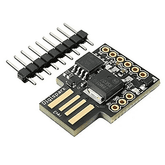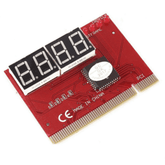Working Principle of AC Motor
Summary
Do you want to learn more about AC motors? If the answer is Yes! then definitely you need to check out this blog post because this covers everything about AC motors from what they are, their construction, working principle, their types, their advantages and applications. So this blog post is a complete guide to learning more about AC motors.
Introduction
An AC motor is used to convert electrical energy into mechanical motion. It consists of a stationary stator and a rotating rotor, which are both powered by electromagnetic induction. When an alternating current flows through the coils in the stator, it produces a constantly changing magnetic field where flux lines cut through the ends of each coil causing electrons to flow within them resulting in electric currents flowing inside each winding as well as creating magnetism directed outwardly from their surface.
This creates an induced torque that causes movement of the rotor between two poles while generating rotational output power on its shaft connected with other components such as gears and mechanisms for further transmission of this kinetic energy but also gets converted back into electricity when electromagnets attached along its circumference produce eddy forces upon energizing at certain angles making these motors’ core concept based around Faraday’s Law applied over years becoming so popular among industrial automation processes all across world today!
AC motors are widely used in industries for various industrial applications as well as in some home appliances. So, in this blog let's see what are they and working of AC motor. Stay tuned and let's get started and understand the AC motor working principle.
What is an AC Motor?
AC motor is an electrical machine that takes in AC and produces rotary motion. The difference between an AC motor and a DC motor is that an AC motor uses an AC power supply to work. Also in DC motor power passes/conducts through armature with the help of brushes and commutator that is why this motor is also called conduction motor. Whereas in an AC motor, instead of receiving power from conduction to the armature coil, here the power is received from the armature coil with the help of induction. Imagine we have a transformer. Similar to the power transferred from primary to secondary in a transformer in an AC motor the same phenomenon takes place. Now let's discuss the construction and working of AC motor.
Construction of AC Motor

It consists of two main parts:
Stator: It is the static or not moving part of the motor
Stator frame: provides stator core
Stator core: Laminated and slotted to carry the 3 phase windings
Rotor: It is the moving part of the motor
Two types based on rotor construction
Squirrel cage rotor and slip ring rotor.
AC Motor Working Principle
An AC Motor is one of the most common and widely used motors in today's world. It works on alternating current (AC) power supply, hence its name. Working principle of ac motor with diagram shown below: A stator comprises series coils which are shielded by iron plates called laminations to reduce eddy currents created due to magnetic flux.
When an electrical force is applied through these coils, it induces electromagnetic field that interacts with permanent magnet rotor assembly located inside the coil space at some specific angle depending upon design parameters for creating necessary torque required for rotation of device/machine connected externally to shaft end output point of motor or associated gearbox drive mechanism as applicable per application requirement purpose!
The speed variation capability in case of certain applications makes them more suitable over DC Motors even though cost wise slightly higher than later sometimes but overall best suits huge number industrial applications from domestic energy efficient fans & pumps up-to sophisticated process automation systems like cranes , conveyors etc.
Finally above explained working of AC motor might help you understand basic fundamentals about Working Principle of AC Motor?
When 3 Phase current flows in a 3-phase winding, a rotating magnetic field is created which has constant magnitude, but rotates as a function of the supply frequency. Here rotating magnetic field means its phase angle is changing(similar to how the phase angle of ac supply changes) due to the sinusoidal nature of the power supply.

This generated rotating magnetic field gets cut by the rotor conductor. So according to the faradays law change in magnetic field generates emf in the rotor which gives rise to the current.

This force F acts on the rotor and it rotates in the same direction as that of magnetic field.
Also, the current generated according to lenz law generates a opposite magnetic field which opposes the cause which has generated it. So, in order to reduce these eddy current losses lamination is done.
Types of an AC Motor

As we have seen above the rotor rotates in the same direction as that of the magnetic field. So depending on the speed the synchronous speed whether its equal to or greater than rotor speed motor’s are classified:
Synchronous Motor
When synchronous speed is equal to the rotor speed then the torque is zero and during this time motor is neither driving the load nor braking. So, a synchronous motor is a motor in which the speed of the rotor is equal to the rate at which the magnetic field is rotating.
Note: Synchronous speed is the rate at which the magnetic field is moving and not the stator. It is always greater than the rotor speed since it determines the rotor speed(slip between 0 and 1). If rotor speed is greater a generator action is produced and not motoring.
Synchronous AC Motor Working Principle:
A synchronous AC motor runs with its rotor speed matching the rotation of the magnetic field. When these speeds align, there's no torque, meaning the motor neither drives nor brakes the load. This synchronization ensures precise speed control and efficiency, vital in industrial and power generation settings.
For example, In power plants, synchronous AC motors are frequently employed to drive large generators. These generators are crucial components in electricity generation, converting mechanical energy into electrical energy. Synchronous motors are well-suited for this task because of their ability to synchronize with the grid frequency, maintaining a constant speed that matches the required rotational speed of the generator. This synchronization ensures that the generator produces electricity at the correct frequency, typically 50 or 60 Hz, in line with the grid's requirements. By precisely controlling the motor's speed, power plants can ensure stable and efficient electricity generation, essential for meeting the demands of industrial, commercial, and residential consumers.
Asynchronous Motor
Speed of rotor is not equal to the rate at which the magnetic field is moving.

S is slip, Ns is synchronous speed and N is rotor speed.
Slip is the measure of difference between synchronous speed and shaft speed.
Asynchronous motors are again classified into single-phase and three-phase ac motors.

Single-phase AC motors
They work on a single-phase power supply. Single-phase power is the power supply which is used in most of the homes since power requirement is less.
Single Phase AC Motor Working Principle:
Single-phase AC motors work by using a single-phase power supply commonly found in homes. The motor's stator creates a rotating magnetic field when energized by the AC power, which interacts with the rotor, causing it to rotate. A starting mechanism helps overcome inertia. Once running, the motor continues operating as long as power is supplied.
For example, Single-phase AC motors are used in ceiling fans. The motor's stator creates a rotating magnetic field, which drives the rotation of the fan blades attached to the rotor. This allows the fan to circulate air in a room.
Three-phase AC motors
They work on a three-phase power supply. The three-phase power supply is used in commercial and industrial areas since the electricity requirement is more. It splits the power supply for a load into three phases which decreases the load in one phase.
Example : If you have 3 machines running generally on a single-phase u can make each machine run on one phase in case of 3 phase power supply thus reducing the load effect on single phase.
Three Phase AC Motor Working Principle:
Three-phase AC motors operate on a three-phase power supply, commonly used in commercial and industrial settings due to higher electricity demands. The motor's stator creates a rotating magnetic field when energized by the three-phase power, inducing current in the rotor conductors and generating torque for rotation. This balanced power distribution ensures smoother operation and increased efficiency compared to single-phase motors, making them suitable for heavy-duty applications in various industries.
Advantages of AC Motor
Design simple, AC source can be directly connected to the motor, Maintenance less, good for applications where high motor speed is required.
Disadvantages of AC Motor
Starting torque is less, it is difficult to operate at low speed, and eddy current loss can be high
Application of AC Motor
Following are the applications of the AC motor:
- Hydraulic and irrigation pumps
- Conveyor systems
- Fans and air conditioners.
- Compressor drives and systems.
- Water pumps.
- Refrigerator.
Conclusion
In this article, we have learned that what is AC motor, working principle of ac motor, different types of AC motor, and their applications.
If you appreciate our work and understand AC motor working principle don't forget to share this post and leave your opinion in the comment box.
Please do check out other blog posts about Popular Electronics
Make sure you check out our wide range of products and collections (we offer some exciting deals!)






